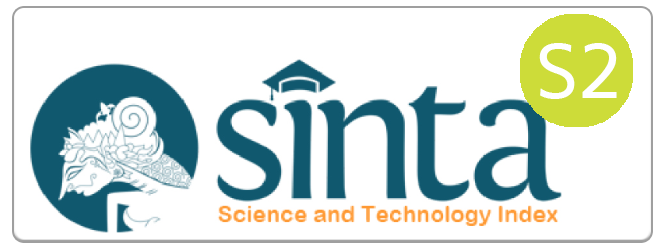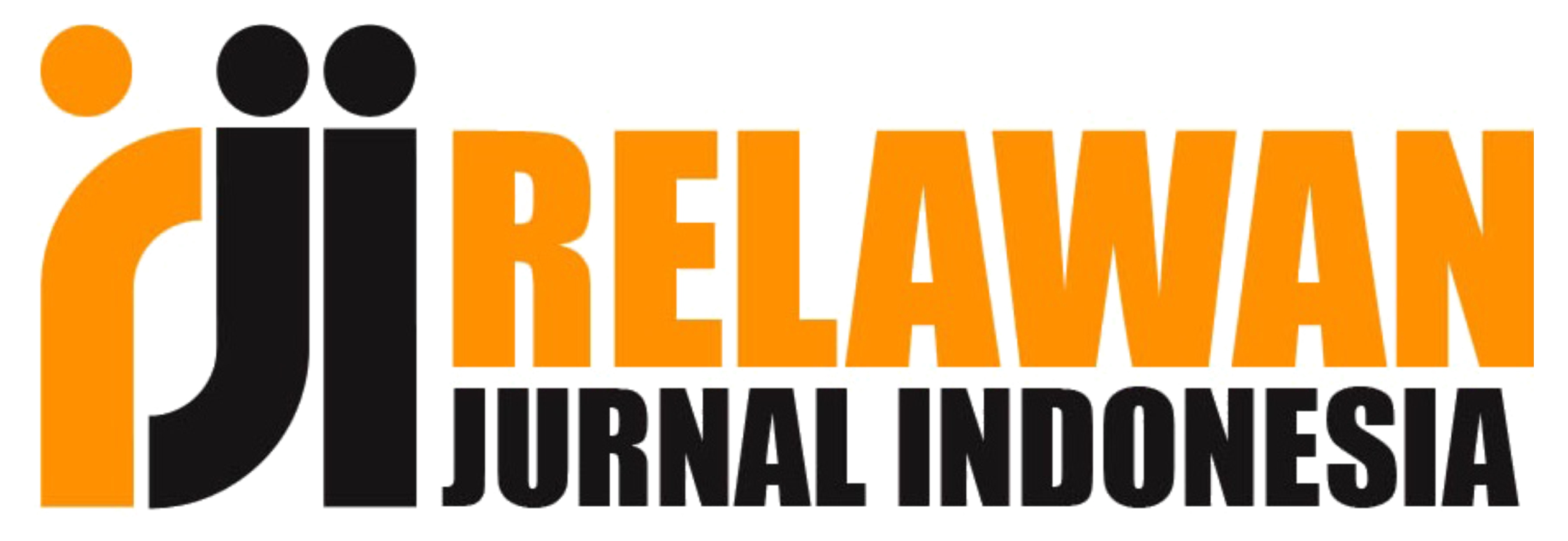Digital Customer Protection: Mediator between Mobile Money Usage and Financial Inclusion
Abstract
Keywords
Full Text:
PDFReferences
Abel, S., Mutandwa, L., & le Roux, P. (2018). A Review of Determinants of Financial Inclusion. International Journal of Economics and Financial Issues, 8(3), 1–8.
Adaba, G. B., Ayoung, D. A., & Abbott, P. (2019). Exploring the contribution of mobile money to well-being from a capability perspective. Electronic Journal of Information Systems in Developing Countries, 85(4), 1-11. https://doi.org/10.1002/isd2.12079
Adams, R. B. (2021). Trust in finance: Values matter. Journal of the Japanese and International Economies, 60, 1-23. https://doi.org/10.1016/j.jjie.2021.101123
Ajide, F. M. (2015). Financial inclusion and rural poverty reduction: Evidence from Nigeria. International Journal of Management Sciences and Humanities, 3(2), 1-23.
Akomea-Frimpong, I., Andoh, C., Akomea-Frimpong, A., & Dwomoh-Okudzeto, Y. (2019). Control of fraud on mobile money services in Ghana: an exploratory study. Journal of Money Laundering Control, 22(2), 300–317. https://doi.org/10.1108/JMLC-03-2018-0023
Andryanda, R., Darwin, M., Listyaningsih, U., & Kutanegara, P. M. (2022). Social Innovation for Poverty Reduction in the Special Region of Yogyakarta. In International Journal of Innovative Science and Research Technology 7(4), 373-379. www.ijisrt.com373
Atkinson, A., & Messy, F.-A. (2013). “Promoting Financial Inclusion through Financial Education: OECD/INFE Evidence,Policies and Practice”. OECD Working Papers on Finance and Private Pensions, No. 34. OECD Publishing. https://doi.org/10.1787/5k3xz6m88smp-en
Azali, K. (2016). Cashless in Indonesia: Gelling Mobile E-frictions? Southeast Asian Economies, 33(3), 364–386. https://doi.org/10.1355/ae33-3e
Babajide, A. A., Adegboye, F. B., & Omankhanlen, A. E. (2015). International Journal of Economics and Financial Issues Financial Inclusion and Economic Growth in Nigeria. International Journal of Economics and Financial Issues, 5(3), 629–637.
Baron, R. M., & Kenny, D. A. (1986). The Moderator-Mediator Variable Distinction in Social Psychological Research. Conceptual, Strategic, and Statistical Considerations. Journal of Personality and Social Psychology, 51(6), 1173–1182. https://doi.org/10.1037/0022-3514.51.6.1173
Barykin, S. Y., Kapustina, I. V., Kirillova, T. V., Yadykin, V. K., & Konnikov, Y. A. (2020). Economics of digital ecosystems. Journal of Open Innovation: Technology, Market, and Complexity, 6(4), 1–16. https://doi.org/10.3390/joitmc6040124
Batista, C., & Vicente, P. C. (2020). Adopting Mobile Money: Evidence from an Experiment in Rural Africa. AEA Papers and Proceedings, 110, 594–598. www.iza.org
Bhuvana, M., & Vasantha, S. (2016). Dimensions for measuring financial inclusion in the rural areas of Tamil Nadu. Indian Journal of Science and Technology, 9(32), 1-8. https://doi.org/10.17485/ijst/2016/v9i32/98663
Bongomin, G., & Ntayi, J. (2020a). Trust: mediator between mobile money adoption and usage and financial inclusion. Social Responsibility Journal, 16(8), 1215–1237. https://doi.org/10.1108/SRJ-01-2019-0011
Bongomin, G., & Ntayi, J. M. (2020b). Mobile money adoption and usage and financial inclusion: mediating effect of digital consumer protection. Digital Policy, Regulation and Governance , 22(3), 157–176. https://doi.org/10.1108/DPRG-01-2019-0005
Bongomin, G., Ntayi, J. M., Munene, J. C., & Malinga, C. A. (2018). Mobile Money and Financial Inclusion in Sub-Saharan Africa: the Moderating Role of Social Networks. Journal of African Business, 19(3), 361–384. https://doi.org/10.1080/15228916.2017.1416214
Bougie, R., & Sekaran, U. (2020). Research Methods for Business, A Skill Building Approach (M. McDonald, L. Johnson, & J. Howarth, Eds.; 8 Asia Edition). Wiley Global Education US.
Budiyono, E. F. C. S., & Krisnawati, A. (2021). The Role of Trust in Mediating the Effect of Mobile Money Usage towards Financial Inclusion: Evidence from Gunungkidul, Indonesia. The International Journal of Business & Management, 9(10), 65-73. https://doi.org/10.24940/theijbm/2021/v9/i10/bm2110-014
Caruana, J. (2016, October). Financial inclusion and the fintech revolution: implications for supervision and oversight. Conference Remarks at the Third GPFIFSI Conference on Standard-Setting Bodies and Innovative Financial Inclusion.
Chauhan, S. (2015). Acceptance of mobile money by poor citizens of India: Integrating trust into the technology acceptance model. Info, 17(3), 58–68. https://doi.org/10.1108/info-02-2015-0018
Chinen, K., & Endo, H. (2012). Effects of Attitudes and Background on Personal Financial Ability: A Survey in the United States Mortgage default and financial literacy: Situation in the USA and Implications for Japan View project. International Journal of Management, 29(No 2 Part 2), 778–791.
Churchill, G. A., & Iacobucci, D. (2006). Marketing research: methodological foundations : Vol. 199 No 1. Dryden Press.
Cohen, J. (1988). Statistical Power Analysis for the Behavioral Sciences (2nd Edition). Lawrence Erlbaum Associates, Publishers.
Committee on Payment and Settlement Systems. Working Group on Innovations in Retail Payments. (2012). Innovations in retail payments. Bank for International Settlements.
Cruijsen, C., de Haan, J., & Roerink, R. (2021). Financial knowledge and trust in financial institutions. Journal of Consumer Affairs, 55(2), 680–714. https://doi.org/10.1111/joca.12363
CSAYP, Central Statistics Agency of Yogyakarta Province. (2022). Yogyakarta Special Region Province in Figure 2021.
CSAYP, Central Statistics Agency of Yogyakarta Province (2021). DIY Poverty Analysis in Figure 2020.
Dew, J., & Jian Xiao, J. (2013). The Financial Management Behavior Scale: Development and Validation. In Article in Journal of Financial Counseling and Planning. 22(1), 43-59 https://www.researchgate.net/publication/256019544
Donovan, K. (2012). Mobile money for financial inclusion. Information and Communications for Development, 61(1), 61-73.
Erlando, A., Riyanto, F. D., & Masakazu, S. (2020). Financial inclusion, economic growth, and poverty alleviation: evidence from eastern Indonesia. Heliyon, 6(10), 1-13. https://doi.org/10.1016/j.heliyon.2020.e05235
Erlianta, R, N., Lupikawaty, M., & Andriyani, T. (2021). The Effect of Financial Technology on Financial Inclusion SMEs in Palembang City (Volume 1). Art. Volume 1
Falahati, L., Sabri, M. F., & Paim, L. H. J. (2012). Assessment a model of financial satisfaction predictors: Examining the mediate effect of financial behaviour and financial strain. World Applied Sciences Journal, 20(2), 190–197. https://doi.org/10.5829/idosi.wasj.2012.20.02.1832
Fall, N. A. M., Diop-Sall, F., & Poncin, I. (2021). Drivers of the experience value of mobile money transfer service: Senegaleseuser perspectives. Journal of Services Marketing, 35(7), 901–917. https://doi.org/10.1108/JSM-07-2020-0282
FSA, Financial Services Authority. (2017). Financial Consumer Protection Strategy in Figure 2013 - 2017.
FSA, Financial Services Authority Regulation Number 13/POJK.02/2018 Concerning Digital Financial Innovation in the Financial Services Sector, Pub. L. No. 13/POJK.02/2018 (2018).
FSA, Financial Services Authority. (2020). Indonesian National Strategy for Financial Literacy in Figure 2021-2025.
FSA, Financial Services Authority. (2021). The Indonesian Financial Services Sector Master Plan 2021-2025.
Garg, S., & Agarwal, Dr. P. (2014). Financial Inclusion in India – a Review of Initiatives and Achievements. IOSR Journal of Business and Management, 16(6), 52–61. https://doi.org/10.9790/487X-16615261
Garrido, J., & Nolte, J. (2021). [online]. Making Electronic Money Safer in the Digital Age. Available at: https://www.imf.org/en/blogs/articles/2021/12/14/blog121421-making-electronic-money-safer-in-the-digital-age. [Accessed: 17 December 2022]
Glavee-Geo, R., Shaikh, A. A., & Karjaluoto, H. (2017). Mobile banking services adoption in Pakistan: are there gender differences? International Journal of Bank Marketing, 35(7), 1088–1112. https://doi.org/10.1108/IJBM-09-2015-0142
Gosavi, A. (2018). Can Mobile Money Help Firms Mitigate the Problem of Access to Finance in Eastern sub-Saharan Africa? Journal of African Business, 19(3), 343–360. https://doi.org/10.1080/15228916.2017.1396791
Grohmann, A. (2018). Financial literacy and financial behavior: Evidence from the emerging Asian middle class. Pacific Basin Finance Journal, 48, 129–143. https://doi.org/10.1016/j.pacfin.2018.01.007
GSMA. (2018). 2017 State of the Industry Report on Mobile Money. www.gsma.com/mobilemoney
Hair, J. F., Sarstedt, M., Hopkins, L., & Kuppelwieser, V. G. (2014). Partial least squares structural equation modeling (PLS-SEM): An emerging tool in business research. In European Business Review 26(2), 106–121. Emerald Group Publishing Ltd. https://doi.org/10.1108/EBR-10-2013-0128
Hasibul, A., Abul, S., & Enamul, A. (2019). The Impact of Mobile Money on Long-Term Poverty: Evidence from Bangladesh. Munich Personal RePEc Archive (MPRA) Paper 97466, 1-32.
Hidayati, S. (2011). Cash-in and cash-out agents for mobile money in Indonesia. Leadership Program for Financial Inclusion- Policy Memoranda. 41-45.
Huang, Y., & Zhang, Y. (2020). Financial Inclusion and Urban–Rural Income Inequality: Long-Run and Short-Run Relationships. Emerging Markets Finance and Trade, 56(2), 457–471. https://doi.org/10.1080/1540496X.2018.1562896
Humbani, M., & Wiese, M. (2018). A Cashless Society for All: Determining Consumers’ Readiness to Adopt Mobile Payment Services. Journal of African Business, 19(3), 409–429. https://doi.org/10.1080/15228916.2017.1396792
Ibrahim, S., Ozdeser, H., & Cavusoglu, B. (2019). Financial inclusion as a pathway to welfare enhancement and income equality: Micro-level evidence from Nigeria. Development Southern Africa, 36(3), 390–407. https://doi.org/10.1080/0376835X.2018.1498766
Islam, A. T. M. H., Basher, S. A., & Enamul Haque, A. K. (2022). The impact of mobile money on long-term poverty: evidence from Bangladesh. Journal of Social and Economic Development, 24(2), 436–455. https://doi.org/10.1007/s40847-022-00194-0
Jahanzeb, A., & Muneer, S. (2012). Implication of Behavioral Finance in Investment Decision-making Process. In Information Management and Business Review, 4 (10), 532-536.
Joseph, T. E. (2020). How to Improve Mobile Money Service Usage and Adoption by Nigerians in the Era of Covid-19. In International Journal of Finance, Insurance and Risk Management: Vol. X (3), 31-52. https://ssrn.com/abstract=368525
Kanobe, F., Alexander, P. M., & Bwalya, K. J. (2017). Policies, regulations and procedures and their effects on mobile money systems in Uganda. Electronic Journal of Information Systems in Developing Countries, 83(1), 1-15. https://doi.org/10.1002/j.1681-4835.2017.tb00615.x
Karakas, F. (2009). Welcome to World 2.0: The new digital ecosystem. Journal of Business Strategy, 30(4), 23–30. https://doi.org/10.1108/02756660910972622
Kasim, H., & Antwi, S. K. (2015). Qualitative and Quantitative Research Paradigms in Business Research: A Philosophical Reflection. European Journal of Business and Management, Vol.7(3), 217–225. www.iiste.org
Kaur, S., & Kapuria, C. (2020). Determinants of financial inclusion in rural India: does gender matter? International Journal of Social Economics, 47(6), 747–767. https://doi.org/10.1108/IJSE-07-2019-0439
Krishan Sharma, R., Jain, V., & Gupta, S. (2014). Financial Inclusion in Rural Oman: A Demand and Supply Analysis. In International Journal of Management and International Business Studies 4(3), 339-348. http://www.ripublication.com
Lal, T. (2019). Measuring impact of financial inclusion on rural development through cooperatives. International Journal of Social Economics, 46(3), 352–376. https://doi.org/10.1108/IJSE-02-2018-0057
Malady, L., & Law, U. (2016). Consumer Protection Issues for Digital Financial Services in Emerging Markets. Banking & Finance Law Review, 31(2), 389–401.
Marano, P. (2019). Navigating insurtech: The digital intermediaries of insurance products and customer protection in the EU. Maastricht Journal of European and Comparative Law, 26(2), 294–315. https://doi.org/10.1177/1023263X19830345
Maurer, B. (2012). Mobile Money: Communication, Consumption and Change in the Payments Space. Journal of Development Studies, 48(5), 589–604. https://doi.org/10.1080/00220388.2011.621944
Mazer, Rafe, & McKee, K. (2017). Consumer Protection in Digital Credit. Focus Note 108. Washington, D.C.: CGAP, August.
Moor, J. H. (1997). Towards a Theory of Privacy in the Information Age. Computer and Society, 27–32.
Morgan-Thomas, A., Dessart, L., & Veloutsou, C. (2020). Digital ecosystem and consumer engagement: A socio-technical perspective. Journal of Business Research, 121, 713–723. https://doi.org/10.1016/j.jbusres.2020.03.042
Mugume, R., & Bulime, E. W. N. (2022). Post-COVID-19 recovery for African economies: Lessons for digital financial inclusion from Kenya and Uganda. African Development Review, 34(S1), S161–S176. https://doi.org/10.1111/1467-8268.12652
Munyegera, G. K., & Matsumoto, T. (2016). Mobile Money, Remittances, and Household Welfare: Panel Evidence from Rural Uganda. World Development, 79, 127–137. https://doi.org/10.1016/j.worlddev.2015.11.006
Murendo, C., Wollni, M., de Brauw, A., & Mugabi, N. (2018). Social Network Effects on Mobile Money Adoption in Uganda. Journal of Development Studies, 54(2), 327–342. https://doi.org/10.1080/00220388.2017.1296569
Myeni, S., Makate, M., & Mahonye, N. (2020). Does mobile money promote financial inclusion in Eswatini? International Journal of Social Economics, 47(6), 693–709. https://doi.org/10.1108/IJSE-05-2019-0310
Narteh, B., Mahmoud, M. A., & Amoh, S. (2017). Customer behavioural intentions towards mobile money services adoption in Ghana. Service Industries Journal, 37(7–8), 426–447. https://doi.org/10.1080/02642069.2017.1331435
Neuman, W. Lawrence. (2003). Social research methods: Qualitative and quantitative approaches. Allyn and Bacon.
OECD. (2018). G20/OECD Policy Guidance Financial Consumer Protection Approaches in the Digital Age. www.oecd.org/going-digital.
Ozili, P. K. (2018). Impact of digital finance on financial inclusion and stability. Borsa Istanbul Review, 18(4), 329–340. https://doi.org/10.1016/j.bir.2017.12.003
Palmié, M., Miehé, L., Oghazi, P., Parida, V., & Wincent, J. (2022). The evolution of the digital service ecosystem and digital business model innovation in retail: The emergence of meta-ecosystems and the value of physical interactions. Technological Forecasting and Social Change, 177, 1-10. https://doi.org/10.1016/j.techfore.2022.121496
Paramasivan, C., & Ganeshkumar, V. (2013). View of Overview of Financial Inclusion in India. International Journal of Management and Development Studies, 2(3), 45–49.
Park, C.-Y., & Mercado, R. v. (2018). Financial Inclusion: New Measurement and Cross-Country Impact Assessment (No. 539). https://doi.org/10.22617/WPS189270-2
Park, Y. S., Konge, L., & Artino, A. R. (2020). The Positivism Paradigm of Research. Academic Medicine : Journal of the Association of American Medical Colleges, 95(5), 690–694. https://doi.org/10.1097/ACM.0000000000003093
Peruta, M. (2018). Adoption of mobile money and financial inclusion: a macroeconomic approach through cluster analysis. Economics of Innovation and New Technology, 27(2), 154–173. https://doi.org/10.1080/10438599.2017.1322234
Prathap, V., & Khaitan, R. (2016). When Is Microcredit Unsuitable? Guidelines using primary evidence from low-income households in India.
Pratiwi, L. R. E., & Krisnawati, A. (2021). The Role of Digital Consumer Protection in Mediating the Effect of Mobile Money usage towards Financial Inclusion: an Evidence from Buleleng, Indonesia. International Journal of Science and Management Studies (IJSMS), 195–207. https://doi.org/10.51386/25815946/ijsms-v4i5p116
Preacher, K. J., & Hayes, A. F. (2004). SPSS and SAS procedures for estimating indirect effects in simple mediation models. In Behavior Research Methods, Instruments, & Computers (Vol. 36, Issue 4). www.psychonomic.org/archive/.
Raj Srivastava, D. (2015). The role of mobile money and digital financial services. SOCRATES: An International, Multi-Lingual, Multi-Disciplinary, Refereed (Peer-Reviewed), Indexed Scholarly Journal, 3(1). http://orcid.org/0000-0003-3189-2235
Ratnawati, K. (2020). The Impact of Financial Inclusion on Economic Growth, Poverty, Income Inequality, and Financial Stability in Asia. Journal of Asian Finance, 7(10), 73–085. https://doi.org/10.13106/jafeb.2020.vol7.no10.073
Riley, E. (2018). Mobile Money and Risk Sharing Against Village Shocks. Journal of Development Economics, 135, 43–58.
Roitman, S. (2019). Urban poverty alleviation strategies in Yogyakarta, Indonesia: Contrasting opportunities for community development. Asia Pacific Viewpoint, 60(3), 386–401. https://doi.org/10.1111/apv.12229
RPSRY, Regional Planning of the Special Region of Yogyakarta. (2022). Handling Inequality in the Special Region of Yogyakarta.
Sasongko, D. T., Handayani, P. W., & Satria, R. (2021). Analysis of factors affecting continuance use intention of the electronic money application in Indonesia. Procedia Computer Science, 197, 42–50. https://doi.org/10.1016/j.procs.2021.12.116
Saunders, L. (2019). Fintech And Consumer Protection: A Snapshot. www.nclc.org
Schicks, J. (2013). The Sacrifices of Micro-Borrowers in Ghana - A Customer-Protection Perspective on Measuring Over-Indebtedness. Journal of Development Studies, 49(9), 1238–1255. https://doi.org/10.1080/00220388.2013.775421
Sekaran, U., & Bougie, R. (2019). Research Methods For Business: A Skill Building Approach (8th ed.). Wiley Global Education US.
Selvakumar, M., Mathan, J., & Sathyalakshmi, & v. (2015). Rural Perspective Towards Financial Inclusion. Journal of Economic and Social Thought, 2(2), 106–120.
Shaikh, A. A., Glavee-Geo, R., Karjaluoto, H., & Hinson, R. E. (2023). Mobile money as a driver of digital financial inclusion. Technological Forecasting and Social Change, 186, 1-14. https://doi.org/10.1016/j.techfore.2022.122158
Sharma, A., Sumita Kukreja, M., & Professor, A. (2013). An Analytical Study:Relevance of Financial Inclusion For Developing Nations. In Research Inventy: International Journal Of Engineering And Science: Vol 2. (6), 15-20.
Shukla, U. N. (2017). An Empirical Study on Future of Mobile - Wallets in India : A Gateway for Cashless Payments. Arthshastra Indian Journal of Economics & Research , 6, 51–62.
Singh, R., & Malik, G. (2019). Impact of Digitalization on Indian Rural Banking Customer: With Reference to Payment Systems. Emerging Economy Studies, 5(1), 31–41. https://doi.org/10.1177/2394901519825912
Stolper, O. A., & Walter, A. (2017). Financial literacy, financial advice, and financial behavior. Journal of Business Economics, 87(5), 581–643. https://doi.org/10.1007/s11573-017-0853-9
UN Capital Development Fund (UNCDF). (2020). Financial Inclusion and the SDGs.
Upadhyay, P., & Jahanyan, S. (2016). Analyzing user perspective on the factors affecting use intention of mobile based transfer payment. Internet Research, 26(1), 38–56. https://doi.org/10.1108/IntR-05-2014-0143
Volken, T (2009). Elements of Trust: The Cultural Dimension of Internet Diffusion Revisited. Information Technology, Education and Society 10(2),45-77. https://doi.org/10.7459/ites/10.2.04
WASK, We Are Social and Kepios. (2022). Digital 2022 Indonesia, The Essential Guide to the Latest Connected Behaviours. https://datareportal.com/reports/digital
-2022-indonesia
World Bank. (2012). 2012 Information and Communications for Development Maximizing Mobile. https://openknowledge.worldbank.org/handle/10986/11958 License: CC BY 3.0 IGO
Zakaria, R. H., Jaafar, N. I. M., & Maricon, S. (2012). Financial Behavior and Financial Position: A Structural Equation Modelling Approach. Middle-East Journal of Scientific Research, 12(10), 1396–1420.
DOI: http://dx.doi.org/10.56444/mem.v38i1.3374
Article Metrics
Abstract view : 874 timesPDF - 0 times
Refbacks
- There are currently no refbacks.
Copyright (c) 2023 Media Ekonomi dan Manajemen

This work is licensed under a Creative Commons Attribution 4.0 International License.

This work is licensed under a Creative Commons Attribution 4.0 International License.







